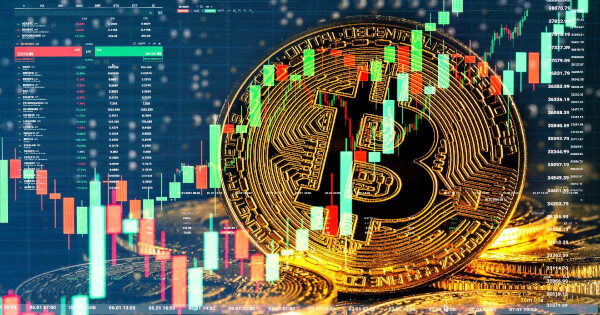FLOKI Price Drops 17% After $2.27M Whale Deposit to Binance - Technical Recovery Signals Emerge
Terrill Dicki Sep 05, 2025 08:50
FLOKI trades with modest 1.11% daily gains following massive whale sell-off. RSI at 42.15 suggests oversold bounce potential despite bearish MACD signals.

Quick Take
• FLOKI currently trading with 1.11% gains in 24h after recent sharp decline • Floki's RSI at 42.15 indicates potential oversold bounce from neutral territory • Major whale transferred 15.22 billion FLOKI tokens ($2.27M) to Binance causing 17% price drop
What's Driving FLOKI Price Today?
The most significant catalyst affecting FLOKI price this week was the massive token transfer on August 30th, when a previously dormant wallet moved 15.22 billion FLOKI tokens worth approximately $2.27 million directly to Binance. This whale movement immediately triggered a sharp 17% price decline, demonstrating how concentrated holdings continue to impact FLOKI's market dynamics.
Large-scale transfers to centralized exchanges typically signal selling pressure, as whales often move tokens to exchanges ahead of liquidation. The timing of this deposit coinciding with FLOKI's price drop confirms the market's sensitivity to major holder movements. However, the modest 1.11% recovery in recent trading suggests some stabilization may be occurring.
The whale activity highlights FLOKI's ongoing challenge with token distribution concentration, where significant holders can create substantial price volatility through single transactions. This pattern has become a recurring theme for meme-based cryptocurrencies, where early adopters and large holders maintain outsized influence over price action.
FLOKI Technical Analysis: Mixed Signals Emerge
Floki technical analysis reveals a complex picture following the recent whale-induced selloff. The FLOKI RSI currently sits at 42.15, positioning the token in neutral territory but approaching oversold conditions. This RSI level often presents opportunities for short-term bounces, particularly after sharp declines driven by external selling pressure rather than fundamental deterioration.
FLOKI's MACD indicators tell a more bearish story, with the MACD line, signal line, and histogram all showing negative values. The MACD histogram's bearish reading suggests downward momentum remains intact despite the modest daily recovery. This divergence between RSI and MACD creates uncertainty about FLOKI's immediate direction.
The Stochastic oscillator provides additional context, with %K at 19.61 and %D at 18.43, both indicating oversold conditions. When combined with the neutral RSI reading, these indicators suggest FLOKI may be approaching a technical floor where buying interest could emerge.
FLOKI's Bollinger Bands position shows the %B at 0.2434, indicating price is trading in the lower portion of the recent range. This positioning often precedes either further breakdown or reversal, making the next few trading sessions critical for determining FLOKI's short-term trajectory.
Floki Price Levels: Key Support and Resistance
Based on Binance spot market data, Floki support levels and FLOKI resistance zones will be crucial for determining the next price direction. The recent whale selling has likely established new technical levels that traders should monitor closely.
The immediate challenge for FLOKI price will be reclaiming key moving averages that may now act as resistance. The SMA 7, SMA 20, and EMA 12 levels will serve as initial hurdles for any recovery attempt. Successfully breaking above these shorter-term averages could signal the beginning of a bounce from oversold levels.
On the downside, FLOKI must hold above the strong support level established during the recent selloff. A break below this level could trigger additional selling from both technical traders and those concerned about further whale movements. The FLOKI/USDT pair's ability to maintain current levels will be essential for preventing a deeper correction.
Volume analysis shows $7.6 million in 24-hour trading on Binance spot, which represents moderate activity but may need to increase significantly to absorb potential additional selling pressure from large holders.
Should You Buy FLOKI Now? Risk-Reward Analysis
The current FLOKI price environment presents both opportunity and significant risk for different types of traders. Short-term traders might find the oversold technical conditions attractive, particularly given the FLOKI RSI approaching levels that historically generate bounces.
For swing traders, the key consideration is whether the whale selling represents a one-time event or the beginning of broader distribution by large holders. The fact that the selling wallet was previously inactive suggests this may be an isolated incident rather than systematic distribution, potentially creating a buying opportunity for those willing to accept volatility risk.
Conservative investors should exercise extreme caution given FLOKI's demonstrated sensitivity to whale movements. The 17% single-day decline illustrates how quickly substantial losses can occur, making position sizing and risk management critical for any FLOKI investment.
Day traders focusing on the FLOKI/USDT pair should watch for volume confirmation of any directional moves. Without significant volume supporting price action, any bounces may prove short-lived and vulnerable to additional selling pressure.
Risk management remains paramount, with stop-losses recommended below recent support levels to protect against further whale activity or broader market weakness affecting meme tokens.
Conclusion
FLOKI price faces a critical juncture following the significant whale deposit that triggered a 17% decline. While technical indicators like the FLOKI RSI suggest potential for near-term bounces, the bearish MACD signals and ongoing whale overhang create uncertainty about sustained recovery. Traders should focus on volume confirmation and key resistance reclaims over the next 24-48 hours to gauge whether FLOKI can stabilize or faces additional downside pressure. The token's sensitivity to large holder movements remains a primary risk factor that all market participants must consider.
Image source: Shutterstock.jpg)